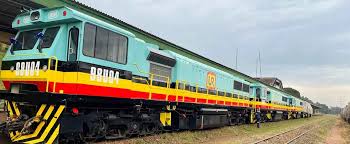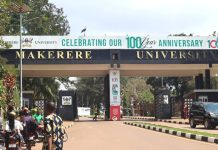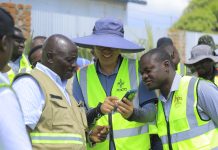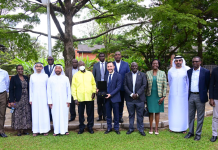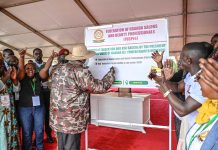The Ministry of Works and Transport is spearheading the implementation of Uganda’s Standard Gauge Railway (SGR), a transformative infrastructure project under the framework of Uganda Vision 2040, National Development Plans (NDP I, II & III), and regional protocols such as the Northern Corridor Integration Projects (NCIP). This ambitious project aims to modernize and expand Uganda’s railway network, fostering economic growth, regional integration, and sustainable development.
The Vision and Strategic Importance
Envisaged as the backbone of Uganda’s transport network, the SGR is set to revolutionize freight and passenger transport by offering a cost-effective, reliable, and environmentally friendly alternative. It will connect Uganda to regional hubs, including Mombasa and Dar es Salaam ports, and neighboring countries like South Sudan, Rwanda, and the Democratic Republic of Congo.
Currently, Uganda relies heavily on the existing Meter Gauge Railway (MGR), which handles only a fraction of the nation’s freight despite the increasing cargo volumes. The SGR is positioned as the solution to enhance Uganda’s competitiveness, lower transport costs, and drive socio-economic transformation.
Benefits of the SGR Project
- Economic Impact: Lower transport costs, reduced road wear and tear, and faster transit times.
- Environmental Benefits: A 72% reduction in hydrocarbon emissions.
- Regional Integration: Enhanced trade and connectivity within East Africa.
- Job Creation: Opportunities across construction, operations, and management.
- Improved Safety: Reliable passenger and cargo transport, reducing road accidents.
Key Features of Phase I (Malaba-Kampala)
- Route Length: 272 kilometers with six stations.
- Speed: 120 km/h for passenger trains and 100 km/h for freight trains.
- Capacity: Axle loading of up to 25 tonnes for the main line.
- Infrastructure: Viaducts, bridges, traction substations, and fencing along the corridor.
Progress and Challenges
Significant progress has been made, including procurement for the EPC/Turnkey contract, updating of Environmental and Social Impact Assessments (ESIA), and acquisition of 58% of the Right of Way (RoW). However, challenges such as land acquisition delays, financing constraints, and regional dependencies remain hurdles to project completion.
Future Plans and Stakeholder Engagement
Uganda remains committed to completing the SGR and rehabilitating the MGR as a stop-gap measure. The government is also exploring opportunities for regional partnerships, international financing, and the establishment of complementary infrastructure such as Inland Container Depots (ICDs) and Industrial Parks.
In addition, the Greater Kampala Metropolitan Area (GKMA) Light Rail Transit system is in the pipeline to address urban transport needs. A concept paper for this project envisions improved connectivity across major corridors in Kampala and surrounding districts.
Call to Action
The Government of Uganda invites stakeholders, development partners, and private sector players to join hands in realizing the SGR project. By aligning with Uganda’s local content policy, international contractors and suppliers can contribute to this transformative endeavor, ensuring a sustainable and interconnected transport ecosystem.
The SGR project represents a cornerstone of Uganda’s development agenda, promising to unlock economic potential and drive the nation towards rapid socio-economic transformation.


